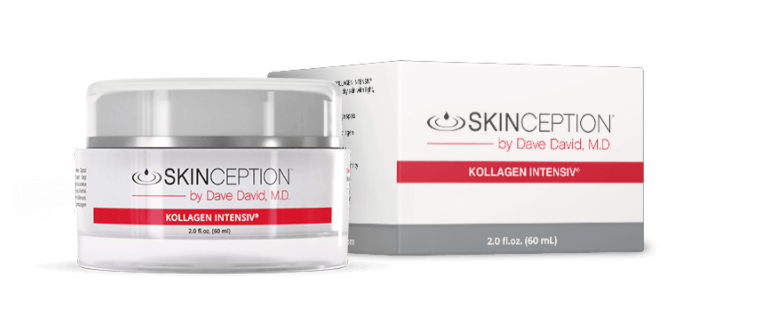Treating Acne with Azelaic Acid

What is azelaic acid?
Azelaic acid is a natural skincare active that is widely used in conjunction with other acne treatments and procedures. But what exactly is azelaic acid you might ask? Well, don’t sweat it. You’re in the right place to find all you need to know about this skin active, how it works, and why it’s great for people who suffer from mild to moderate acne.
Azelaic acid is an organic acid acid found in cereals such as barley, wheat, and rye.
It possesses antibacterial and anti-inflammatory characteristics, which make it beneficial in the treatment of skin diseases like acne and rosacea. The acids can avoid future breakouts and remove germs from your pores that produce acne.
Azelaic acid can be purchased over the counter in various creams, lotions, gels and pads. These products are applied directly to the affected area of skin once or twice a day. You should work up to using the product twice a day if you have not been using similar products before. If you are not sure how to use it, consult with your doctor or dermatologist.
Because it takes some time to take action, azelaic acid by itself isn’t often a skin specialist’s first option for treating acne. The acid also has some adverse effects, such as skin blistering, roughness, and flaking. Continue reading to find out all you need to know about the use of azelaic acid for breakouts.
Uses of azelaic acid for acne
Azelaic acid is a chemical exfoliant. It works in the same way as glycolic acid or retinol, but it has some distinct differences that make it more appropriate for some skin conditions.
Treating acne with azelaic acid: In recent years, azelaic acid has become a popular treatment for mild to moderate inflammatory acne vulgaris. Unlike benzoyl peroxide and salicylic acid, which are comedolytic (they work by reducing comedo formation), azelaic acid is anti-inflammatory.
This action helps to calm the redness and swelling that can accompany inflamed acne lesions. Azelaic acid may also improve the appearance of post-inflammatory hyperpigmentation sometimes seen in acne lesions.
Azelaic acid may have a role in treating acne rosacea if topical conventional therapies cannot be used due to side effects or intolerance.
Azelaic acid is less irritating than other topical agents used to treat rosacea such as metronidazole, sodium sulfacetamide/sulfur, and barberry extract.
Azelaic acid alone may not be effective in treating acne vulgaris or acne rosacea if there are multiple inflammatory lesions, or if there are non inflamed comedones.
Studies have shown azelaic acid to be effective at treating acne when applied topically, but it may also be effective when taken by mouth. Limited evidence shows that azelaic acid taken orally twice a day may be as effective as topical tretinoin in treating acne, although more studies are needed to confirm this.
If you use oral azelaic acid to treat acne, it may take several months before you see results. Studies show that when used as directed, azelaic acid applied topically or taken orally can reduce the number of pimples and improve the appearance of your skin compared with placebo.
It’s important to know that azelaic acid does not completely cure acne and can cause side effects like dryness, redness and irritation.
There are different brands of azelaic acid available in Canada; ask your doctor which one he or she recommends for you
Azelaic acid is a prescription cream with other medications combined with it to give maximum effect. Azelaic acid works by:
- clearing your pores of bacteria that may be causing irritation or breakouts
- reducing inflammation so acne becomes less visible, less red, and less irritated
- gently encouraging cell turnover so your skin heals more quickly and scarring is minimized
Azelaic acid is applied once per day in the evening after washing the affected area. The cream should not be washed off but allowed to absorb into the skin. Azelaic acid may cause some mild flaking and dryness for a few days until your skin adapts to it. If you experience excessive drying and flaking, use the medication less frequently until your skin adjusts.
Azelaic acid can also be used in combination with other acne treatments such as benzoyl peroxide, salicylic acid, or topical antibiotics. You should continue using any other medications prescribed by your doctor to treat your acne while using azelaic acid.
Azelaic acid may cause a temporary burning, stinging, or itching sensation. If you’re using the medication for acne, it can cause pimples, blackheads, and whiteheads to worsen before they heal.
Staying out of the sun can help reduce sensitivity to light. (Just don’t forget to apply sunscreen before you go outside.)
If using the medication to treat rosacea, you may notice some redness as your face clears up.
Azelaic acid for acne scars
As we age, our skin becomes more susceptible to sun damage and wrinkles begin to appear. While many people choose to undergo expensive and painful surgery in order to look younger, others are choosing to address these issues with over-the-counter acne treatments.
With a few easy steps you can use at home, you too can have the clear skin you’ve always wanted.
Treating acne scars with azelaic acid is a safe and effective way to reduce scarring from pimples. Azelaic acid is an over-the-counter treatment that has been proven to reduce acne scarring by up to fifty percent.
This simple drug can be used as a treatment for rosacea–or even on its own. By applying the right amount of this medicine, you can help your skin return to its natural beauty
First, it is important to understand how scars occur. Acne is caused when pores become clogged with excess oil and dead skin cells. When the oil and cells are trapped in the pore, this causes inflammation and swelling of the surrounding skin cells.
If this irritation occurs often enough, an infected pimple forms which can leave a permanent mark after it heals. The most common acne scars are called pockmarks or ice pick scars; they have a pitted.
For more helpful and informative articles visit our site here.
learn more about azelaic acid here.

